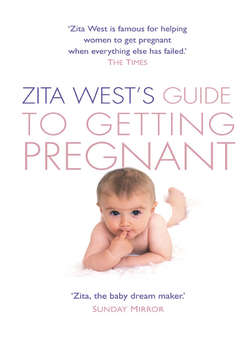Читать книгу Zita West’s Guide to Getting Pregnant - Zita WEST, Zita West - Страница 25
A Woman’s Fertility
ОглавлениеAt birth, every baby girl is born with a full complement of immature eggs in her ovaries – around 2 million, although only between 300–400 will mature during her lifetime – which sounds as if the whole process should be pretty straightforward. But it is the maturation, release (at ovulation), fertilization and implantation of one of these eggs that results in pregnancy. No new egg cells are produced after you are born, so it’s worth thinking about what those egg cells need in order to mature successfully and produce an egg capable of being fertilized. A woman’s eggs are her most precious reserve, and need looking after.
Up until puberty, the egg cells lie dormant in the ovaries, waiting for a shift in the hormonal patterns of a girl’s body to ‘switch on’ her fertility. At what age this starts is largely influenced by genetics – if your mother started her periods early, then it’s likely you will have done, too. Starting menstrual periods is the marker of the beginning of a woman’s fertility, and is known as menarche.
In Western countries, the average age of menarche is between 12 and 14, but can be as early as 10 and as late as 16. All are completely normal. Ovulation can occur before the first period, but a girl’s early menstrual cycles can be erratic, and often without ovulation. Over the next few months, or sometimes longer, the pattern of cycles settles down to what is normal for that girl, as regular ovulation establishes itself.
If you think back to GCSE biology, you will remember the term ‘secondary sex characteristics’, which are the outward, visible signs of puberty and the onset of a woman’s fertile life. In a woman, increasing levels of FSH (follicle – stimulating hormone) and LH (luteinizing hormone) and the beginnings of oestrogen and progesterone production lead to the development of breast tissue, pubic and underarm hair, and a different distribution of body fat, all of which are designed to create a body capable of nourishing a growing baby, both before and after birth. These changes begin before the first menstrual period occurs, and can happen slowly over a couple of years, or relatively quickly. Again, this depends in part on genetics, and a mother’s experience of puberty will give some insight into what her daughter might expect.
Remember how you were warned in your sex education classes at school that sex inevitably led to pregnancy? Remember, too, all the efforts you took in the past not to get pregnant, not to mention all those false alarms? So it may feel a bit of a mystery as to why getting pregnant is now so elusive. This chapter is designed to help you understand your own fertility cycle, and how to work with it to achieve pregnancy.
